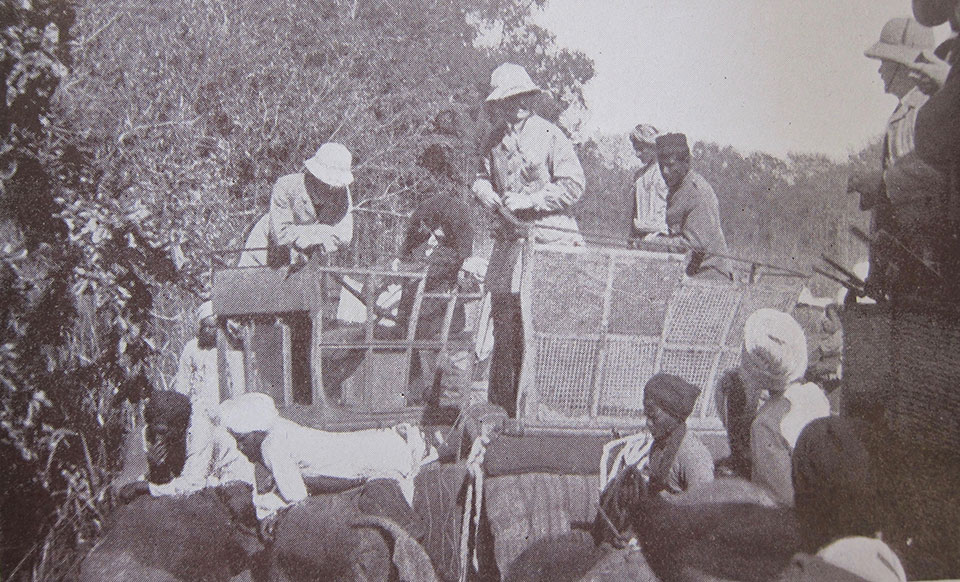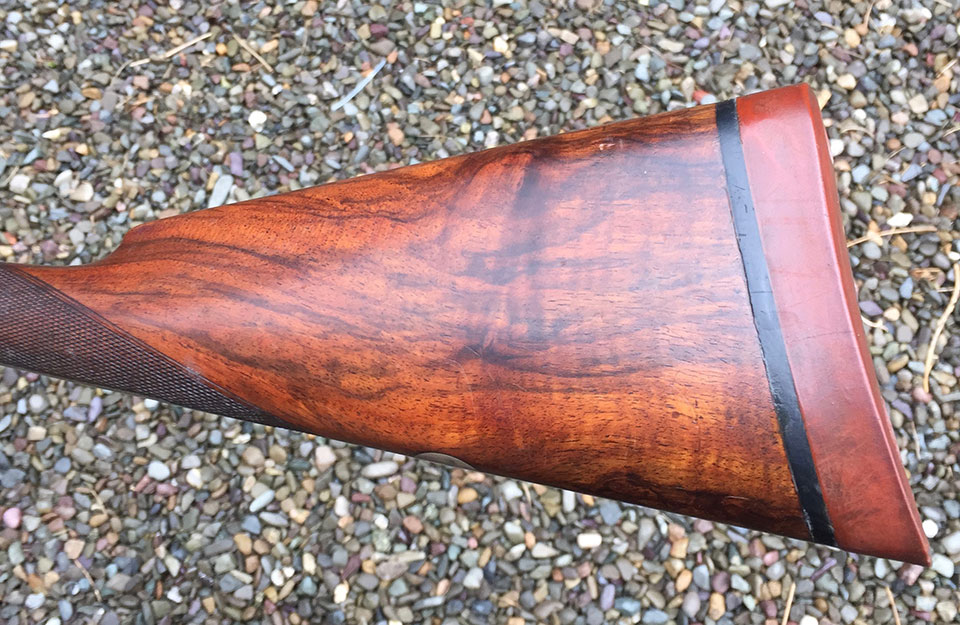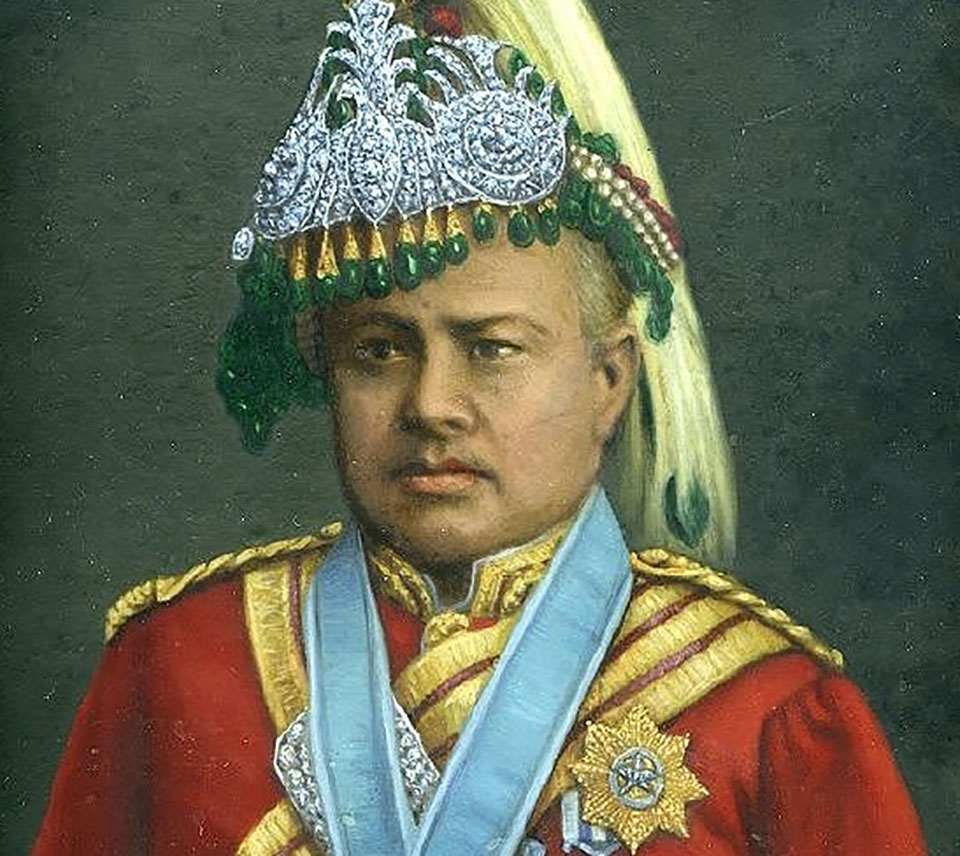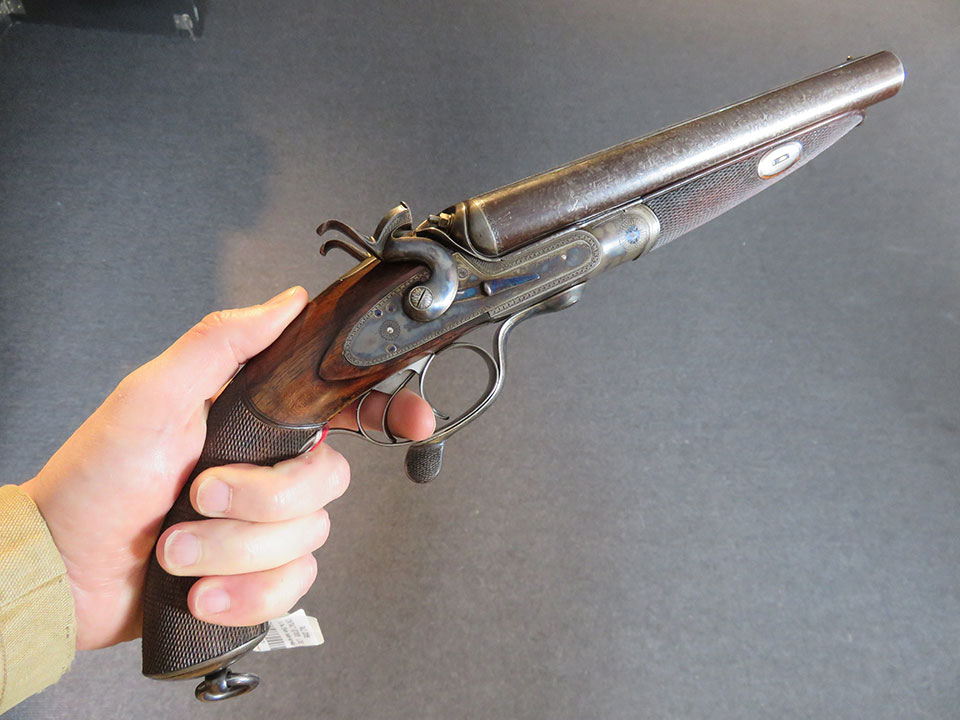The list of guns sent to the Paris Exhibition of 1878 includes examples of virtually every major type of firearm that James Purdey & Sons produced at that time, including seven rifles.
One of these has already been discussed for its ‘chased’ engraving, but there is one other rifle which is particularly notable for a different reason. Unlike the others that have been discussed in previous articles, this is not because it was the fanciest, or the first of its kind, but for simply being the largest double rifle Purdey has ever made. It is also a rifle which I mentioned briefly in my article, Going off with a Bang, but it deserves a more detailed examination.
Large Bore rifles were the dangerous game rifles of their day, using large, heavy projectiles to compensate for the low velocities produced with Black Powder. These were offered in 20-; 16-; 12-; 10-; 8-; and 4-Bore, although Purdey made very few in any of these calibres, with the last recorded in 1904.

As I noted in my previous article, there is only one entry for a rifle in a larger calibre than 8-bore, which is No. 9856. This is recorded in both Dimension Books and the Regulation Ledger as a 6-Bore, but in the Paris list and its sale invoice it is noted as a 4-Bore. This has led to it being described as two different rifles, and so the question of its true calibre first needs to be addressed.
The most logical answer to this puzzle, and the one which best fits the available evidence, is that both designations are true. The nominal diameter of a 6-Bore is between .919” and .975”, and that of a 4-Bore is between 1.052” and 1.156”. When rifles were proofed, the bore diameter was measured through the use of plug gauges, which measured the diameter at the narrowest point.
Therefore, 6-Bore is the diameter between the tops of the rifling’s ‘lands’. The 4-Bore would then be a reference to both the maximum diameter (ie. when measured between the base of the grooves of the rifling) and the cartridge case. The length of this was unrecorded, but was usually 4in. long, and may explain how it was able to contain 12 Drams of No. 6 powder, the largest load recorded in Purdey’s ledgers.
The rifle was regulated on 26 February 1878, but sadly there are no further notes other than that it was sighted for 25 & 100 yards. The barrels are recorded as being 26in. long and weighing 9lb. 6½oz. in their own right! As a double rifle, the action had a solid bar and a Jones’ patent rotary-underlever, combined with bolted back-action locks for the greatest strength and safety.
The stock was fitted with a ‘Silver’s Anti-Recoil Heelplate’, the first encountered reference within the Purdey records, and more than justified for a rifle of this type. Peculiarly, the entry seems to note that the stock had a cheek piece but ‘Not Pistol Hand’. Whether this should be ‘Half Pistol Hand’, or whether it was really built with a straight-hand grip, is a question that cannot be answered. There were also sling-eyes fitted but, given that the rifle weighed 17lbs. 7ozs. in total, it seems unlikely that it would be carried in that manner for any great distance.

In Paris, No. 9856 was priced at £84, although a marginal note records that ‘even £70’ would have been accepted. It failed to find a buyer there, perhaps due to the rather niche nature of such a rifle, but it did not travel to Sydney, remaining at Oxford Street until 1880. In that year the 1st Marquis of Ripon was appointed Viceroy of India, and on 8 May he opened an ‘Outfit Account’ with Purdey.
Like Baron Keane’s ‘Separate Account’, this was distinct from Ripon’s normal accounts, although there was much more transference between the two on this occasion. In total, six guns were bought: A 12-Bore gun for ball on 11 September, along with four .500 double rifles, and the 4-Bore, on 5 October. As might be expected, the 4-Bore was the most expensive, costing £73 10s including a best case and fittings. A mail canvas cover for the case was supplied at the same time for £1 12s 6d, and a canvas cover for the rifle at 15s. The Marquis had sailed for India on 14 May, so it would appear that these arms were taken out to India by Ripon’s son, the famed Earl de Grey.

De Grey made two trips to India, arriving for the first time on 4 December 1880, and staying on until the end of the following March. His correspondence from that period suggests that his local contact, a man by the name of Sanderson, was both incompetent and insufferable, and he was glad to leave him after such a dreadful experience. He returned to India at the end of 1882, about the same time that his father’s outstanding account of £751 11s 2d was settled at Purdey.
He was joined by five companions, who he described as a ‘very cheery, sociable party,’ and they availed themselves of shooting that had been arranged for Ripon in Nepal, but which he could not attend due to political issues. They were guests of the Maharajah of Nepal, Sir Runudeep Singh, and conducted at least part of their shooting from the back of elephants. De Grey eventually returned to England in April 1883, although his father remained Viceroy until the end of the following year.
Although his game books are legendary, de Grey was apparently quite reticent about his shooting experiences, and there is little reference to his use of the 4-Bore. It appears only once more in Ripon’s accounts, on 28 April 1885, when No. 9856 was ‘cleaned, browned, repaired &c.’ at a cost of £2 3s. Thereafter the rifle does not appear in either man’s account, although there was admittedly little need for such a piece on the Yorkshire moors.

In terms of what firing such a rifle was like, an evocative description is provided by a contemporary of de Grey’s, Lord Frederick Hamilton, who was invited hunting by the Maharajah of Cooch Behar in 1891. The first chapter of his book, Here, There, and Everywhere, describes some of the events of this five-week hunting trip, and the descriptions of ‘…the Maharajah’s terrific 4-Bore…’ are filled with dread. This rifle was loaded with:
'…14½ drachms of black powder; the kick seemed to break every bone in one’s shoulder, and I was frightened to death every time that I fired it off.'
At one point Hamilton, threatened by a tiger, grabbed for what he thought was an Express rifle, but realized as he fired that he had instead selected the 4-Bore:
'The big rifle went off with a noise like an air-raid, and knocked me with mangled shoulder-blades into the seat of the howdah.'
Although it seems unlikely that de Grey would have treated the situation in quite the same way, it certainly give a sense of what it was like to fire such a rifle, even in ‘anger’. Sadly, it does not appear that this rifle has been seen by Purdey since the 1880s, so it can only be hoped that it has survived, and will one day return to Audley House.
Published by Vintage Guns Ltd on (modified )




